Are you looking for a way to protect your vehicle? Paint protection film (PPF) has been growing in popularity as an option to keep your car shielded from whatever may come its way. But with any big decision, it’s important to consider not only the pros but the cons as well. In this article, we’ll focus on, and explore, the disadvantages of PPF.
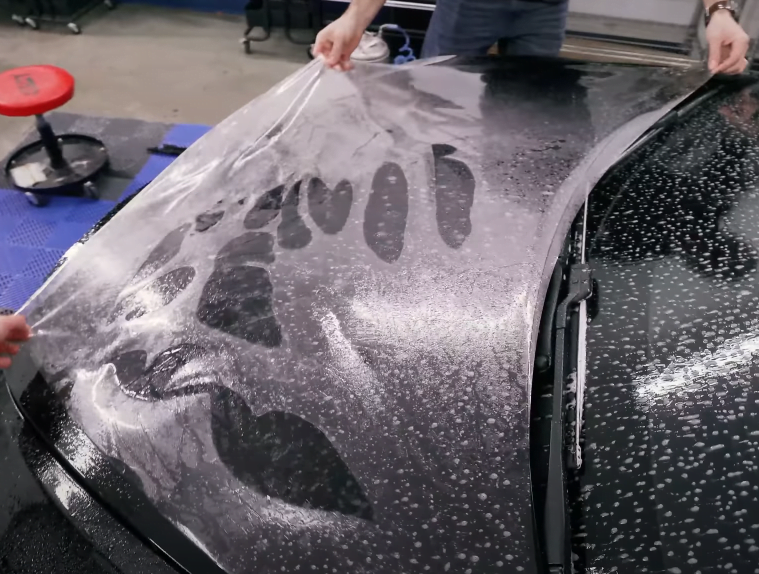
What is Paint Protection Film (PPF)?
If you’re reading this article, chances are you are familiar with PPF, but many automotive enthusiasts out there are still not filled in. So, first, let’s explain what this product is. In simple terms, paint protection film is exactly what it sounds like: a film that protects your car’s paint. It transparently covers your vehicle and protects the paint (clear coat, specifically) from scratches, rock chips, and more.
PPF further explained
Before exploring the disadvantages, let’s further understand some of the basics of PPF.
Major brands
PPF is sold by major brands such as 3M, Suntek, and Xpel. There are other manufacturers out there, but as usual, you’ll get what you pay for. When choosing a film, you’ll want to consider various properties, including thickness. A thicker film is often preferred for areas that are more exposed or for cars that will be seeing a lot of use. However, thicker films can also show more scrapes and bumps as they wear.
Other names
You might have heard other people talking about PPF without even knowing it, as it’s sometimes called clear wrap or clear bra, amongst other things.
Is it legit?
Some might wonder if wrapping a car in (what essentially amounts to) heavy-duty plastic wrap is really a legitimate solution. The fact is more and more people are turning to it, and many car dealerships are even offering it as an add-on to new vehicle purchases. While it won’t make your car invincible, it can act as a shield reasonably well.
Installation
PPF is not an easy thing to install. Unless you’re very ambitious, you’ll be taking it to a professional to have it done correctly. Like other jobs, such as paintwork, preparation is paramount in PPF installs. The car must be immaculately cleaned and the surface well-prepared before applying the film. Then PPF can be sized and installed in three main ways:
Freehanded
This method consists of simply taking a large piece of film, putting it over the areas of the car to cover, and then cutting it by hand. This method is probably most suited to advanced installers and may allow them the most control in order to do the best job. However, it’s also dangerous, as the installer may accidentally scratch the car when cutting the film.
Using templates
Another method is by using premade templates. By using software, an installer can find premade templates for most makes and models. This template can then be used with a plotter to print out the film in sections personalized for the vehicle. The downside to this method is that the pieces of film and sized to only go to the edge of sections and won’t be able to be tucked underneath panels, hiding and protecting the edges of the film.
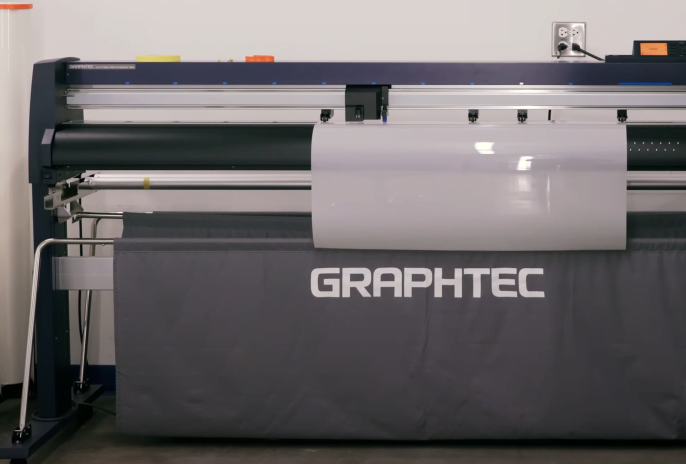
Modified templates
The final method is a modified version of the prior. Installers use software that provides them with templates for the particular vehicle, but then they can modify those templates to their liking. They modify it in a way to allow the film to have excess that can be tucked, hiding the edges.
Once sized, PPF is installed by taking and applying the film to the surface using a squeegee and a special liquid. Next, it is heated up with a heat gun to activate the stickiness and fit it tightly.
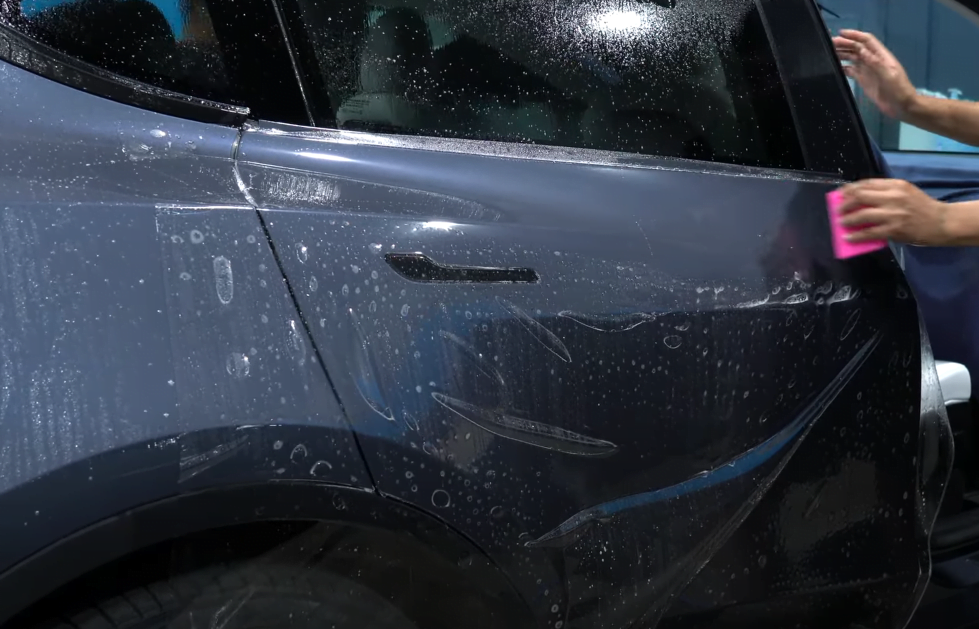
Features
Different PPFs may come with different features. One popular feature is the ability to self-heal. Self-healing PPF is able to mend itself and erase many scratches when heated up by the sun. To aid the self-healing, you can use hot water or a heat gun.
Longevity
PPF is a long-term solution. Its lifespan is anywhere from 5 to 10 years.
Coverage options
PPF can be applied to parts of your car or the entire thing. Some drivers opt to only have it applied to the front area, as this area is most prone to rock chips and other damage.
Disadvantages of PPF
Now that we have a clear (no pun intended) understanding of what PPF is, let’s talk about the disadvantages that users have pointed out.
Cost
Cost is typically one of the first downsides that people point out when considering whether to opt for PPF or not. The cost of PPF can vary widely, but you’ll be looking at thousands of dollars for full coverage. This is a hefty price that may make you think twice before committing to it. One recent quote we heard was $5,000 – $8,000 for full coverage. For partial packages, you could be looking at up to a couple thousand, depending on what’s included.
Factors that can affect the cost include the shop that’s performing the work, the vehicle model, and the amount of coverage needed. Ultimately, PPF is by far the most expensive product used to protect a car’s paint.
Hides your paint
Have you taken the time to admire a gorgeous color-changing, three-stage, deep-metallic paint job lately? Car manufacturers offer paint package upgrades to make your ride really pop. Your car came with a gorgeous coat of paint, so why would you want to obscure that? While some people may say that PPF improves a car’s appearance, most will disagree. As PPF is a film layer that goes over your car, it will inevitably diminish and dull the paint.
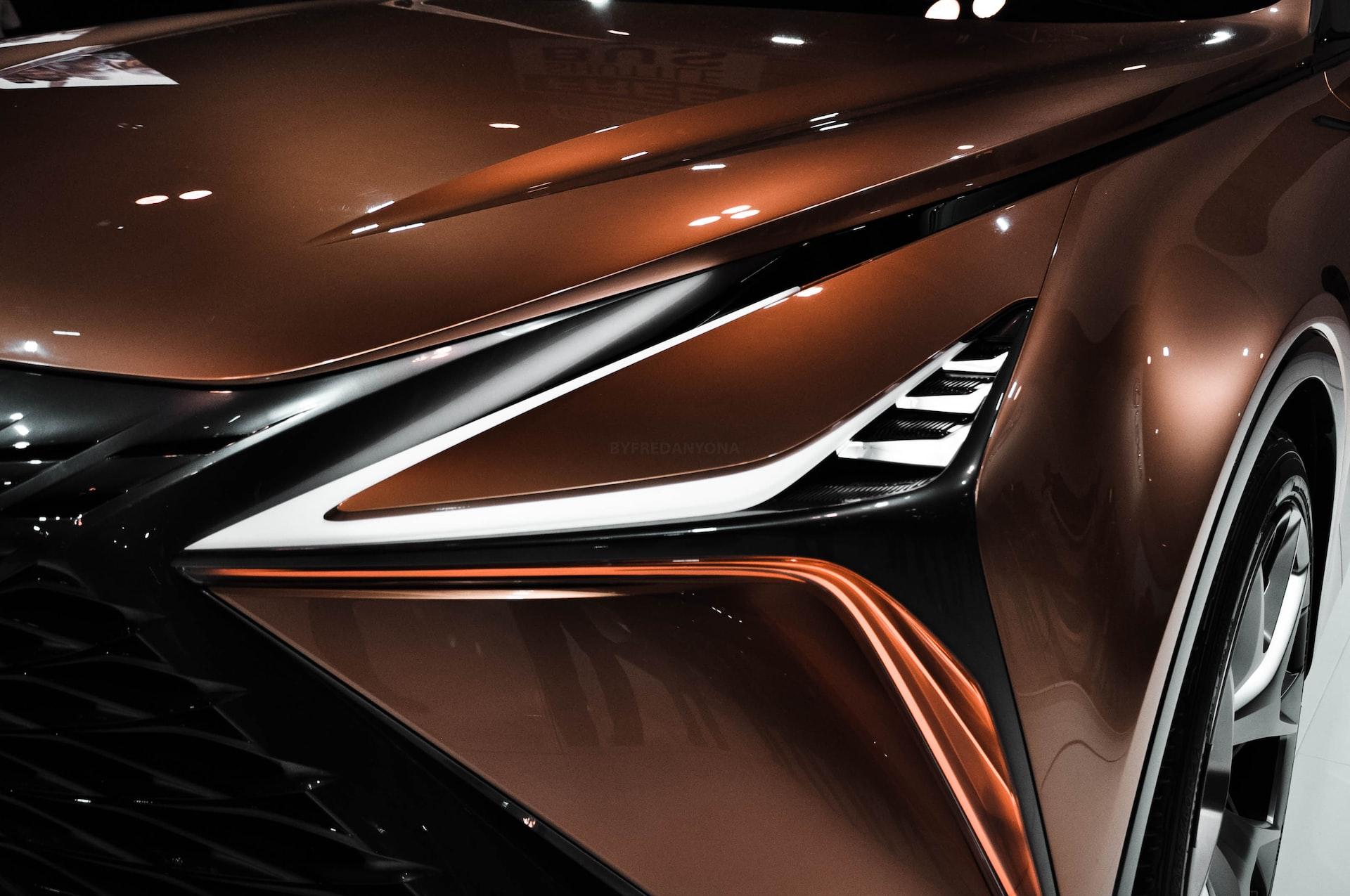
Yellowing
Some PPFs have a problem with yellowing over time. This is particularly noticeable on white cars. Some PPF manufacturers and installers claim that they have solved this problem, but it is a complaint we’ve heard from PPF users that people should be aware of.
Shows blemishes
PPFs purpose is to protect your car from things that can damage it on the road, like the rogue rock that will come your car’s way. While it does a pretty good job at this, sometimes that rock will leave your film tarnished. Self-healing PPF does heal many small scrapes, but some bumps are too big to recover from fully. This will leave a visible defect in the film.
Sure, it’s better to have a defect in your film than in your car’s paint, but it will still be an unsightly patch that you’ll have to live with. These rough spots will become more noticeable over time as they collect dirt and whatnot. Rock chips in PPF will look like rock chips in paint. These spots are particularly noticeable in lighter color cars and least noticeable in black ones.
These blemishes may be more unsightly in PPF than they would’ve been in the paint itself. And if they happened to the paint instead, they could be touched up. PPF users would need an entirely new piece of film to fix the problem.
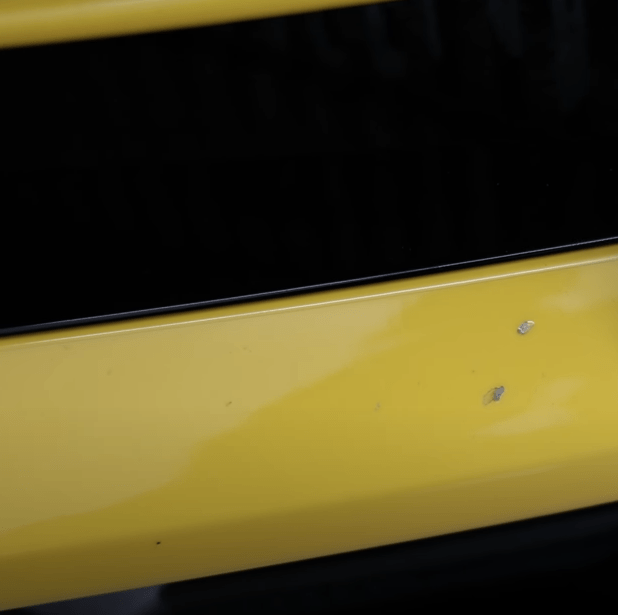
Partial or full coverage?
As previously mentioned, PPF can be had in partial or full coverage. Many people opt to just have the front area of their car PPF’d. Whether this is a way to save money, protect the most vulnerable area, or both, it can end up leaving the car looking kind of funny. Some users purchase a front-only package, then ultimately end up changing their minds and going back to the shop to have the rest of the job completed.
Unsightly edges
The edge of PPF is practically a magnet for dirt. When PPF is installed, the film will usually be put to the edge of the area that needs to be covered. Sometimes, installers will tuck the PPF so that no edge is visible. In many cases, however, tucking is not an option, or the installer may just not opt to do so. So, the PPF’s edge will be visible.
A fresh PPF’s undirtied edge alone will look kind of funny, as you’ll be able to see where it’s applied and where it’s not. Again, some installers will try to tuck areas, which may cost more, but sometimes it’s not possible. As time goes on, the edge will inevitably start to attract dirt. This dirt is not able to be cleaned. The film can be trimmed to remove dirt, but there’s only so much trimming that can be done. Dirty edges can be especially annoying on high-end cars that are made to be shown off. Of course, this is more noticeable in lighter cars.
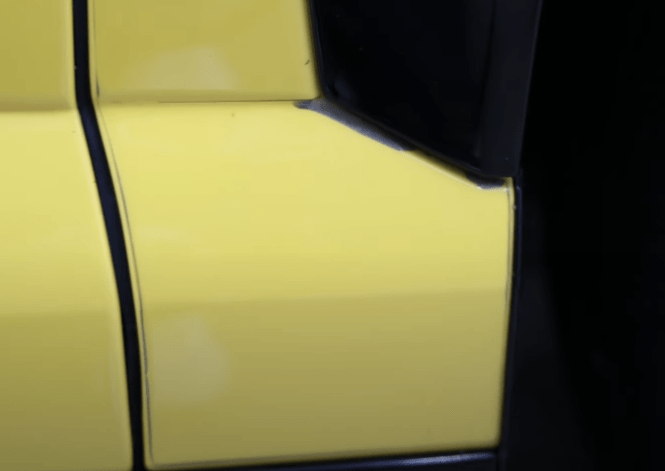
Will the film still be protecting the car? Probably. Because the film goes very close to the edge, it won’t leave much room for damage. Still, dirty edges can be quite eye-catching, depending on how much grime has built up. Even film that has been tucked or applied to the very edge can still shrink inward due to the sun and heat over time. When the shrinking occurs, some of the glue will remain in its original position, attracting and locking dirt onto your ride.
Tricky areas
PPF is, at the end of the day, a film. As such, it can be difficult to maneuver and work with. Some areas of vehicles are much easier to apply film to than others. For instance, large flat areas don’t pose many problems at all. Conversely, curves, holes, angles, and other unusual areas can be problematic. A high-end installer probably won’t be intimidated by many areas, but they can cause issues.
Compare film to ceramic coating, and it’s easy to see how a liquid would have an advantage in this department. Trying to apply film to trick areas like angled openings can leave the film in a stressed position. Eventually, the film may start to peel and lift. Some areas may also collect water, putting more stress on the film.
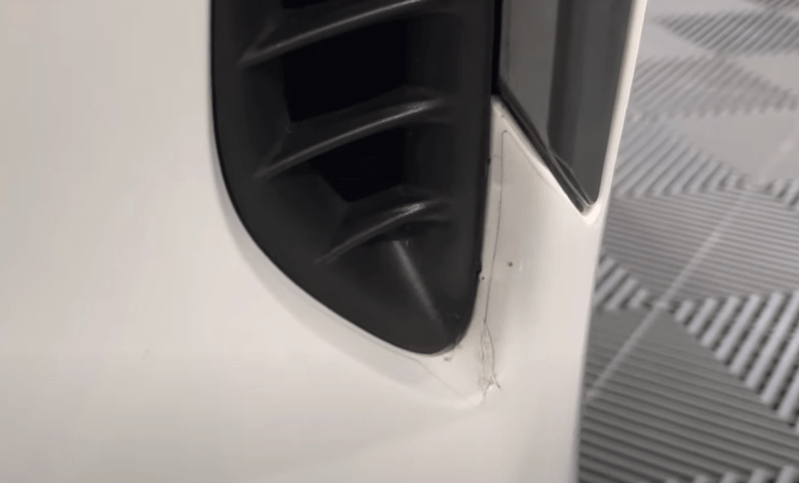
Gaps in film
Sometimes, installers will have to use two pieces of film to cover an area. The ideal situation would be using one piece of film and then tucking it so no edges or breaks are visible. However, there can be cases when a single piece of film isn’t large enough for certain areas. This means that multiple pieces of film will have to be placed next to one another. This creates more film edges, which attract dirt.
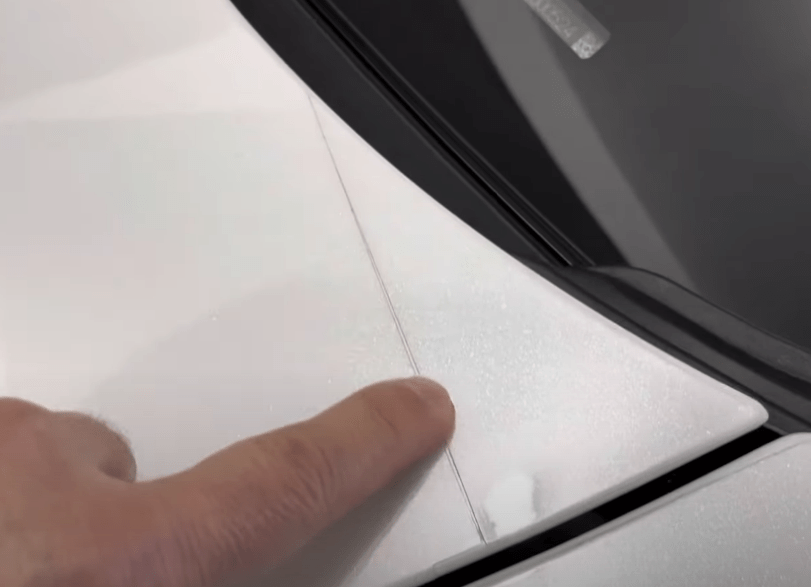
Bugs and birds
Bugs and bird poop pose a particular problem. Due to their biological makeup, they can eat into PPF if not cleaned up promptly. Owners must routinely look for and address these problems in their PPF to avoid unsightly permanent spots.
Maintenance
PPF requires special maintenance. PPF’d cars should not be taken through car washes and should also not be pressure washed. Pressure washers can be a threat to the edges of the film, causing them to lose integrity quicker. This means that you’ll be left to handwashes only. For the people that choose to apply something additional to the film, they’ll also need to avoid any kind of powered buffer.
Poor installation
Imagine setting out to protect your car and damaging it instead. That’s what can happen during a poor PPF installation. There is a chance that an installer can cut or scrape your car’s paint when cutting the film to size. Installers may use a knife to score or cut the film when applying it. Of course, choosing a shop with high reviews is one way to lessen this chance.
Possible damage
Some people wonder if just putting PPF on a vehicle can have any ill effects on the paint. It’s a fair question; after all, the film is chemically bonded to the car. PPF manufacturers will assure you that no damage is possible by using their products. However, there have been reports of PPF that has been left on too long causing damage to the paint. Given that most PPF has a lifespan of five to ten years, this is probably a hard thing to do. Of course, choosing a high-quality film and experienced installer is wise.
Conclusion
So, there you have it. Hopefully you now understand all the disadvantages of paint protection film, and have learned more about this growing product in general. Is PPF right for you? That’s a decision you’ll have to make. From the team here at Auto Fondle, happy motoring!

Passionate writer who loves to learn about all things that go and share that knowledge.